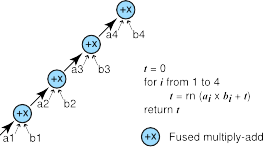
With the growth of large language models (LLMs), deep learning is advancing both model architecture design and computational efficiency. Mixed precision training, which strategically employs lower precision formats like brain floating point 16 (BF16) for computationally intensive operations while retaining the stability of 32-bit floating-point (FP32) where needed, has been a key strategy for��
]]>
This post was written by Nathan Whitehead A few days ago, a friend came to me with a question about floating point. Let me start by saying that my friend knows his stuff, he doesn��t ask stupid questions. So he had my attention. He was working on some biosciences simulation code and was getting answers of a different precision than he expected on the GPU and wanted to know what was up.
]]>